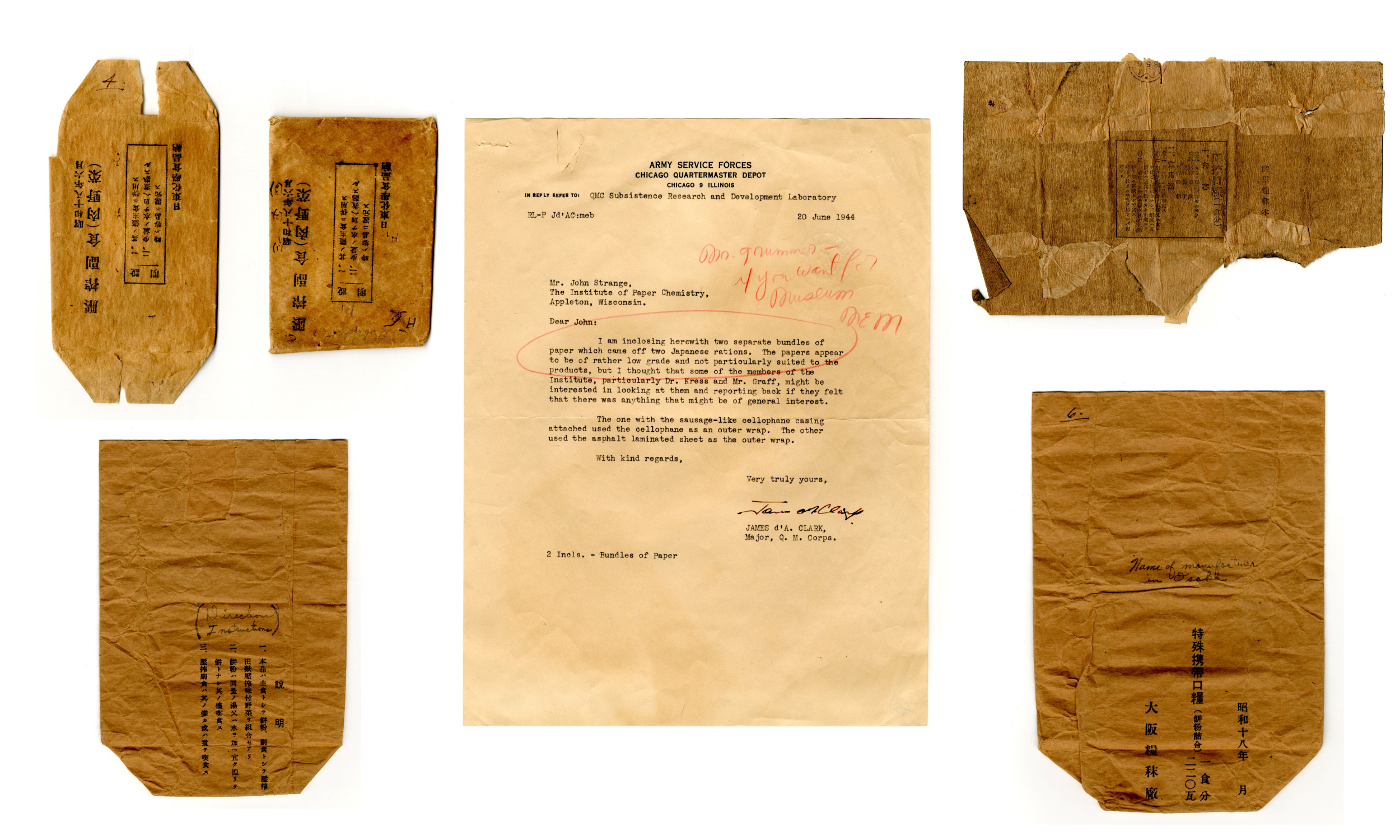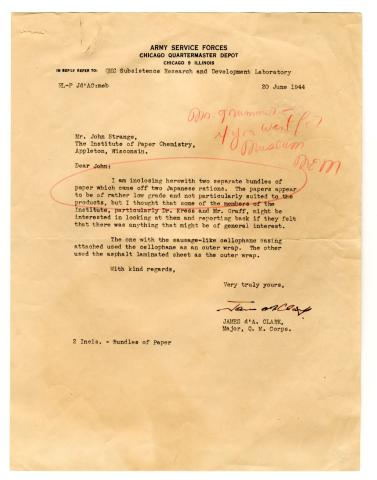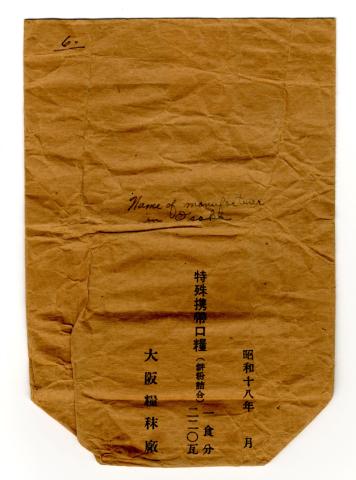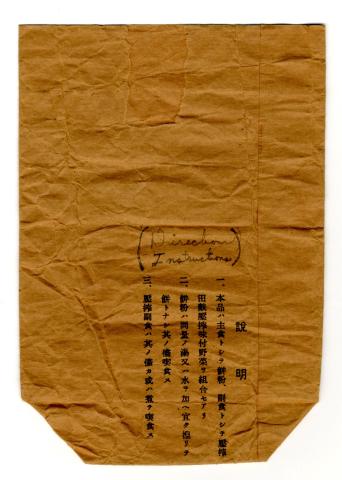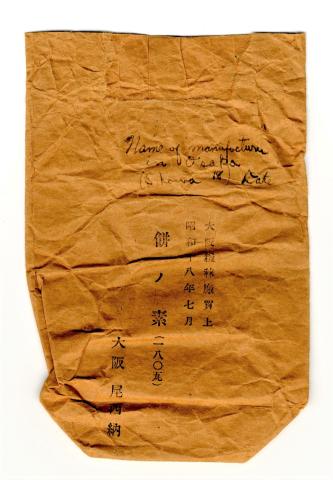World War II Imperial Japanese paper ration wrappers
January 1, 2022
This month’s Artifact of the Month is a collection of Imperial Japanese paper ration wrappers from World War II that were sent to the then Institute of Paper Chemistry (now Renewable Bioproducts Institute) on June 20, 1944. There are five separate pieces that are accompanied by a letter from Major James Clark in the U.S. Army Quartermaster Corps. These paper fragments have labels and instructions printed in Japanese with handwritten notes in English about the ration manufacturers in Osaka. The ration wrappers resemble brown paper bags and were used to hold compressed emergency rations with a staple food of processed wheat as well as supplementary food rations that included rice, hard biscuits, and pink cakes of salted dried plums. The letter, addressed to John Strange, indicates that Major Clark thought the papers to be of interest to the scholars at IPC, especially Dr. Kress and Mr. Graff. The whole package was then sent to Arnold Grummer at the Paper Museum. Major Clark also noted one of the wrappers had a cellophane layer while another had asphalt laminate backing. These were likely part of the outer waterproofing. Further assessment of the paper composition is not possible with the Museum’s current research capabilities.
Sustenance was a struggle for all armies during World War II. Japanese soldiers had to dedicate a significant amount of time to cooking and augmenting their rations by fishing, gardening, and foraging because ration shortages were common on the battlefield. The erratic nature of wartime supply chains and spoilage in tropical environments were major factors in shortages. Malnutrition and the accompanying painful symptoms were common. One of the most prevalent nutritional deficiencies that afflicted Japanese troops was Beriberi or Kak’ke, a vitamin B-1 deficiency. Polished rice, while a ration staple well-liked by soldiers, did not contain the necessary vitamins, exacerbating the nutritional situation. Army quartermasters and physicians attempted to prevent the illness with supplements, but they were not always available or palatable.
The idiom, “an army marches on its stomach” is proved through artifacts like these. Paper, in its different forms, is essential for quickly and efficiently fulfilling the nutritional needs of troops.
Category: Tools
Region of Origin: Asian
Keywords:
